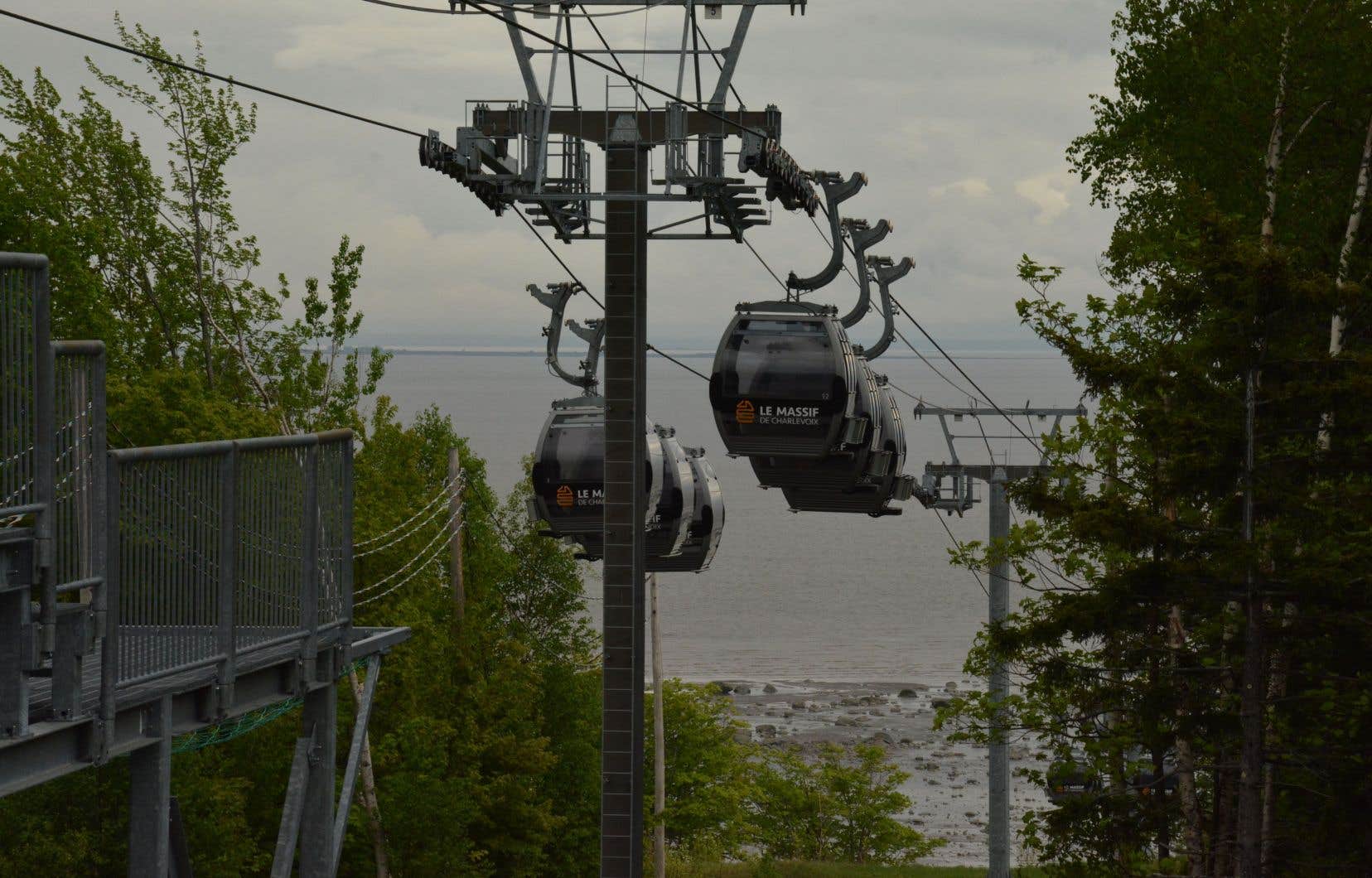This text is taken from Courrier de l’ économique. Click here to subscribe.
All-inclusive tourism has taken root in Charlevoix since Club Med set up shop there on the mountainside. Chalet projects “for investors” and international clients are multiplying, recalling the development of Mont-Tremblant, not without excluding local citizens in the process.
The municipality of Petite-Rivière-Saint-François is experienced in tourism, with 40% of residence in short rentals, the highest rate in Quebec, by far. The landscape nevertheless changed when Club Med was established at the end of its main street.
“We are the big ones in the region,” observes the Canadian vice-president of the brand, Vincent Giraud, from the balcony of his almost new hotel. “ […] We want to be as integrated as possible and work with everyone. »
Now in its third Quebec summer, the Club estimates that its clientele comes approximately 40% from Quebec, 50% from English Canada or the United States and 10% from the rest of the world. Some 1,500 Brazilians came to test the cold last winter, he points out. “We are working to promote the region internationally. […] It benefits everyone. »
This new international clientele would otherwise never have set foot in Quebec, and this influence encouraged several hotels to expand, although these projects did not always flourish.
The GeoLagon, a questionable project to say the least, has been on hold for six months. The same goes for the 118 “condo-hotels” that Le Massif dreams of. This property for “qualified investors” will be reserved 38 days per year for them, and is managed for rental the rest of the year by the hotelier. The Massif team already opened dozens of chalets last December, not far from Club Med, hoping that this is a first phase before the construction of a swimming pool and several shops.
The Mountain Club
These ideas of grandeur, however, leave many in the lurch.
The multinational has practically appropriated the mountain by investing in the bottom of its slope. The Club Med locker room is a stone’s throw from the Massif ski lift. The two entities coordinate the opening of the seasons. One feeds the other, and the demands of the tourism giant now apply to the highest ski areas in Quebec.
Several people involved in the world of tourism have confided to Duty fear a “Disneylandization” of their region. Citizens of Petite-Rivière-Saint-François, too embarrassed to speak publicly, reminded the Duty that it was people from the village who had cleared the mountain, then developed the ski slopes and hiking trails. “We feel more at home,” said one resident interviewed.
As proof, passing visitors and Club Med customers can enjoy a sound and light tour all summer aboard the Massif ski lift. This immersive itinerary in nature broadcasts a soundtrack that plays on a loop in the ears of area residents, six evenings a week, all summer. The “pictures” imagined by the owner, Daniel Gauthier, co-founder of Cirque du Soleil, resonate and disturb within a 3 km radius certain evenings, according to village residents. The public is still there, and several local inns are gaining new customers.
In winter, ski tickets are limited, a habit inherited from the pandemic. The daily price sometimes exceeds $150, which puts off many local skiers, even the most well-off. Mont Grand-Fonds and L’Anse-Saint-Jean, in Saguenay, became the replacement mountains. Le Massif has also restricted reduced-rate outings for schoolchildren in the region, relying mainly on tickets for students from the Petite-Rivière-Saint-François primary school. This is not a “reduction” of the clientele, but “a clarification” of it, indicates the spokesperson for the Massif, Isabelle Vallée. “Our shift follows quality. Quality has that price. » The new clientele gives pride of place to international fortunes, because this clientele would not have come without accommodation. And accommodation, “that’s what makes our mountain operations profitable,” says Isabelle Vallée.
The hotel staff also comes from abroad. Most of Club Med’s approximately 300 service employees come from Mexico or other Club Med destinations.
A change of direction
Mitchell Dion, general director of Tourisme Charlevoix, plays the balancing act between foreign contribution and local life. Around a third of the Charlevoix economy is based on its resorts, according to him. “We are looking more for quality of tourism than quantity,” he summarizes in an interview. “It’s counterproductive to destroy the landscape, when that’s why people come to us. »
Last April, his team agreed to reinvest 5% of taxes on accommodation in sustainable development, especially helping small businesses adapt. Charlevoix Tourism has also adopted an “ecoconditionality” policy, which penalizes the granting of subsidies in the event of environmental negligence by up to 15%, “a regional tourism first in Quebec,” he says.
A directory of all tourist discounts for Charlevoix residents is also available on the Tourisme Charlevoix website, a measure that goes against the grain of all-inclusives which exclude locals.
This report is supported by the Local Journalism Initiative, funded by the Government of Canada.
